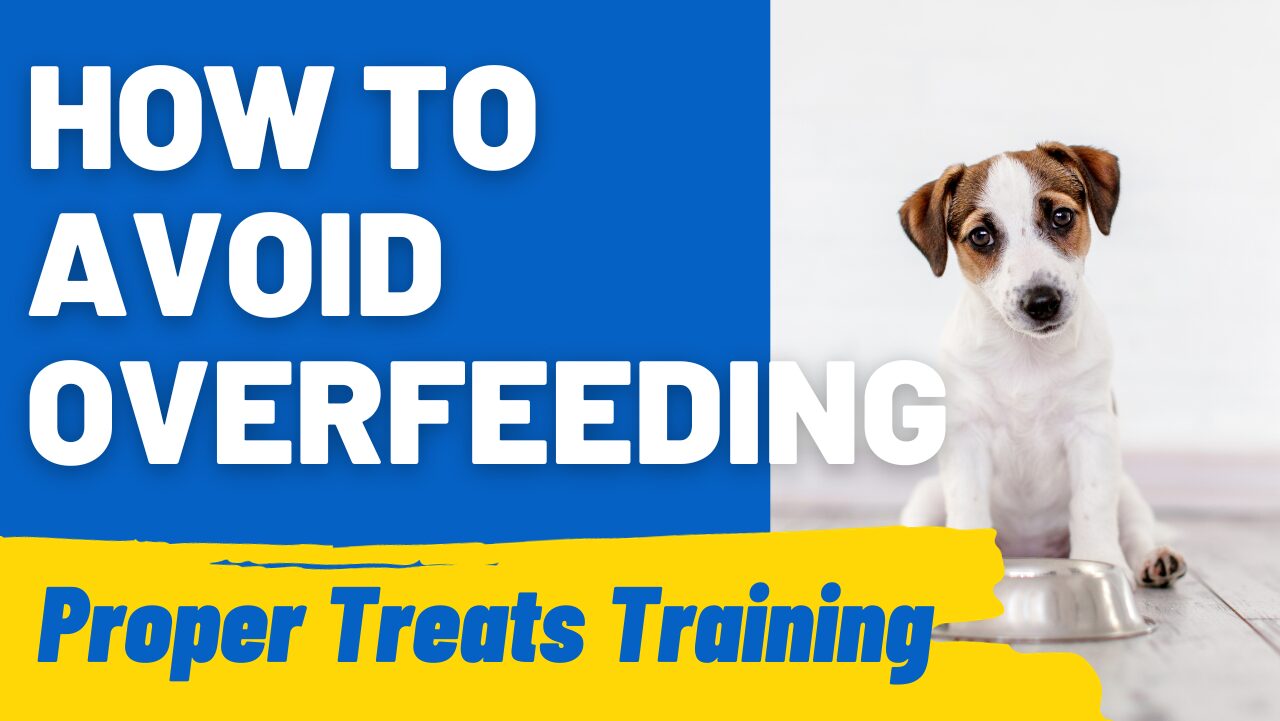Training treats for puppies are like a secret weapon in the arsenal of puppy training. They’re not just incentives; they are potent tools for motivation and behavior shaping.
However, their effectiveness comes with a caveat: the risk of overfeeding. Striking the right balance between rewarding your puppy and maintaining their health is crucial.
In this article, we’ll explore the smart use of training treats for puppies, ensuring you can train effectively without compromising on your pup’s dietary needs.
Let’s embark on this journey towards responsible and effective puppy training with treats.
Why Are Training Treats Important in Puppy Training?
Training treats for puppies play a pivotal role in positive reinforcement, a widely recommended training method. Positive reinforcement involves rewarding desired behaviors to encourage their repetition.
Treats act as an immediate reward, creating a positive association with the behavior for the puppy.
This method taps into the puppy’s natural desire to please and their love for food, making it a powerful training tool.
Training treats are also helpful in capturing a puppy’s attention, crucial for successful training sessions. They can turn challenging or monotonous training routines into fun, rewarding experiences.
Moreover, treats can be used to shape behavior and teach new commands, guiding puppies towards desirable actions in a gentle, encouraging manner.
In essence, training treats for puppies are about much more than food; they’re about communication and building a positive learning environment.
How Can You Avoid Overfeeding Your Puppy with Training Treats?

Avoiding overfeeding while using training treats for puppies requires a mindful approach. Here’s how you can achieve this balance:
- Portion Control: Consider the size of the treat in relation to your puppy’s regular meals. Smaller treats are preferable, especially during frequent training sessions.
- Treat Quality: Choose high-quality, nutritious treats that contribute to your puppy’s overall diet. Opt for treats with wholesome ingredients, avoiding those with empty calories or unhealthy additives.
- Frequency of Treat Use: Be judicious with the frequency of treat dispensing. Not every response needs a treat; sometimes, verbal praise or a pat can be just as effective.
- Incorporate into Daily Calorie Count: Treats should only constitute a small percentage of your puppy’s daily calorie intake. It’s important to adjust their regular meals accordingly to accommodate for treat consumption.
- Use a Variety of Rewards: To keep the focus on training rather than the food, mix up the rewards. Along with treats, use affection, toys, or playtime as part of the reward system.
- Monitor Weight and Health: Keep an eye on your puppy’s weight and health. If you notice any changes, reassess the amount and type of treats being used.
By following these guidelines, you can use training treats for puppies effectively without the risk of overfeeding. It ensures that treats remain a positive and healthy part of your puppy’s training and development.
Interested in reading our post, No Yard? No Problem! Potty Training Your Puppy in an Apartment?
What Are the Best Types of Training Treats for Puppies?
Identifying the best training treats for puppies hinges on their individual needs and preferences. Small, soft treats are generally ideal for young puppies as they are easier to chew and digest.
Treats with high palatability are particularly effective for training, as they hold the puppy’s attention and provide a strong incentive for good behavior.
It’s also beneficial to consider treats with nutritional value, such as those containing vitamins, minerals, and healthy ingredients.
Treats specifically designed for puppies can offer the right balance of size, texture, and nutrition, making them an excellent choice for training sessions.
Comparison of Training Treat Types for Puppies
| Treat Type | Benefits |
| Healthy Treats | Nutritious, made with whole ingredients |
| Low-Calorie | Helps in weight management |
| Grain-Free | Suitable for allergies, digestive health |
| Natural Options | Free from artificial additives |
Choosing Treats for Small vs. Large Puppies
Selecting training treats for puppies requires considering their size. Small puppies need smaller, softer treats that they can easily chew and digest.
These treats should be proportionate to their tiny mouths and stomachs to prevent choking hazards and overfeeding.
For large puppies, slightly larger treats are appropriate. They can handle more substantial pieces and may require a bit more to feel rewarded.
However, even for large puppies, it’s important to keep treats small enough to be quick bites that don’t distract them from training.
The key is to choose treats that are size-appropriate and won’t cause digestive upset, ensuring a safe and enjoyable training experience.
Selecting Treats for Puppies with Sensitive Stomachs
For puppies with sensitive stomachs, choosing the right training treats is crucial. Opt for treats with limited ingredients to minimize the risk of upsetting their stomach.
Look for treats that are easily digestible and free from common irritants like wheat, corn, and soy. Natural ingredients like pumpkin, sweet potato, and single-source proteins are often well-tolerated.
Avoid treats with artificial additives and excessive fats, as these can exacerbate digestive issues.
Consulting with your vet can also provide guidance on suitable treat options for your puppy’s specific needs.
How to Make Homemade Puppy Training Treats?
Homemade puppy training treats offer the advantage of knowing exactly what goes into them, allowing for customization based on your puppy’s dietary needs and preferences. Here are a few simple recipes:
1. Peanut Butter and Pumpkin Treats:
- Ingredients: 2 cups whole wheat flour, 1/2 cup pumpkin puree, 1/4 cup peanut butter (xylitol-free), 2 eggs.
- Instructions: Mix all ingredients to form a dough. Roll out and cut into small shapes. Bake at 350°F for 30-40 minutes.
2. Chicken and Rice Bites:
- Ingredients: 1 cup cooked and shredded chicken, 1 cup cooked rice, 1 egg.
- Instructions: Combine ingredients and form into small, bite-sized balls. Bake at 350°F for about 20 minutes.
3. Sweet Potato and Apple Biscuits:
- Ingredients: 1 sweet potato (cooked and mashed), 1 apple (grated), 2 cups whole wheat flour, 1 egg.
- Instructions: Mix ingredients, roll out the dough, and cut into small pieces. Bake at 350°F for 35-45 minutes.
4. Beef and Carrot Training Bites:
- Ingredients: 1 cup ground beef (lean), 1 cup grated carrots, 1 cup whole wheat flour, 1 egg.
- Instructions: Brown the ground beef in a pan and let it cool. Mix the cooked beef with grated carrots, flour, and egg to form a dough. Roll into small bite-sized pieces. Bake at 350°F for about 25 minutes or until crispy.
5. Fish and Sweet Pea Snacks:
- Ingredients: 1 can of tuna or salmon (in water, drained), 1 cup mashed peas, 1 1/2 cups oat flour, 1 egg.
- Instructions: Combine the fish, mashed peas, flour, and egg. Mix well. Form the mixture into small, flat treats suitable for your puppy’s size. Bake at 350°F for 20-30 minutes, until they are dried and slightly golden.
Is Homemade Puppy Training Treats Effective?
Yes! The benefits of homemade treats are numerous. You have control over the ingredients, ensuring they’re healthy and suitable for your puppy.
They allow for customization for puppies with specific dietary needs or preferences. Plus, making your own treats can be a fun and rewarding experience.
Remember to consider these treats as part of your puppy’s overall diet. Moderation is key, even with healthy, homemade options.
Homemade treats are a fantastic way to add variety to your training routine and can be tailored to meet the nutritional needs of your growing puppy.
What Are the Benefits of Low-Calorie and Grain-Free Puppy Treats?
Low-calorie and grain-free puppy treats are beneficial for several reasons.
Low-calorie treats help manage your puppy’s weight, especially important during training when treats are used frequently. They provide a way to reward your puppy without adding unnecessary calories to their diet, keeping them in optimal health.
Grain-free treats, on the other hand, are ideal for puppies with specific dietary restrictions or sensitivities to grains.
They reduce the risk of allergic reactions and digestive issues, making training a more comfortable experience for your puppy.
Both these treat options ensure that your puppy can enjoy rewards without compromising their overall well-being.
Using Soft and Freeze-Dried Treats in Training: Are They Effective?
Soft and freeze-dried treats are highly effective in puppy training scenarios.
Soft treats are particularly useful as they can be quickly consumed, keeping the focus on training rather than eating. Their texture makes them ideal for younger puppies who might find harder treats difficult to chew.
Freeze-dried treats, with their intense flavor and aroma, are incredibly appealing to puppies. They can be used as high-value rewards for particularly good behavior or challenging training tasks.
Both types of treats are excellent for keeping a puppy’s attention, ensuring they stay engaged and motivated during training sessions, thus enhancing the overall effectiveness of the training process.
How to Balance Treats with Your Puppy’s Regular Diet?

Achieving a balance between treats and your puppy’s regular diet is essential for their overall health.
Treats should complement, not exceed, their daily nutritional requirements, generally constituting no more than 10% of their total caloric intake.
To maintain this equilibrium, adjust your puppy’s meal portions on days with more frequent treat use. Opt for treats that align with their dietary needs.
For a unique and engaging training experience, consider using HoundGames’ Hide N’ Treats which combine the fun of a toy with the reward of a treat, encouraging playful learning while managing treat consumption.
This thoughtful approach ensures your puppy remains healthy and well-nourished.
Monitoring Your Puppy’s Weight and Health During Training
While training treats for puppies are effective, it’s vital to monitor your puppy’s weight and health. Regular weigh-ins and health checks can help identify signs of overfeeding.
Watch for changes in weight, energy levels, and coat quality. If you notice weight gain or other health concerns, adjust treat frequency and portion sizes.
Keeping a close eye on your puppy’s health ensures that training treats contribute positively to their development without leading to unwanted weight issues.
Alternatives to Food Treats in Puppy Training
Alongside training treats for puppies, non-food rewards can play a significant role in training.
Toys, praise, and playtime are excellent alternatives that can effectively motivate and reward your puppy.
These rewards can be particularly useful in situations where food treats are not practical or when you want to avoid overuse of treats.
Incorporating a variety of rewards keeps training sessions engaging and dynamic, helping your puppy stay motivated and excited about learning new behaviors and commands.
Conclusion
Successfully training your puppy with treats is all about finding the right balance. It’s essential to use treats responsibly, ensuring they complement your puppy’s diet and contribute positively to their overall well-being.
Regular monitoring of your puppy’s health and weight, combined with a mix of treat-based and non-food rewards, can create a rich, effective training experience.
As you continue on this rewarding journey, remember to enjoy the process and cherish the bond it builds with your puppy.
For more resources and innovative training tools, check out HoundGames, where you can find additional support for your training adventures.




